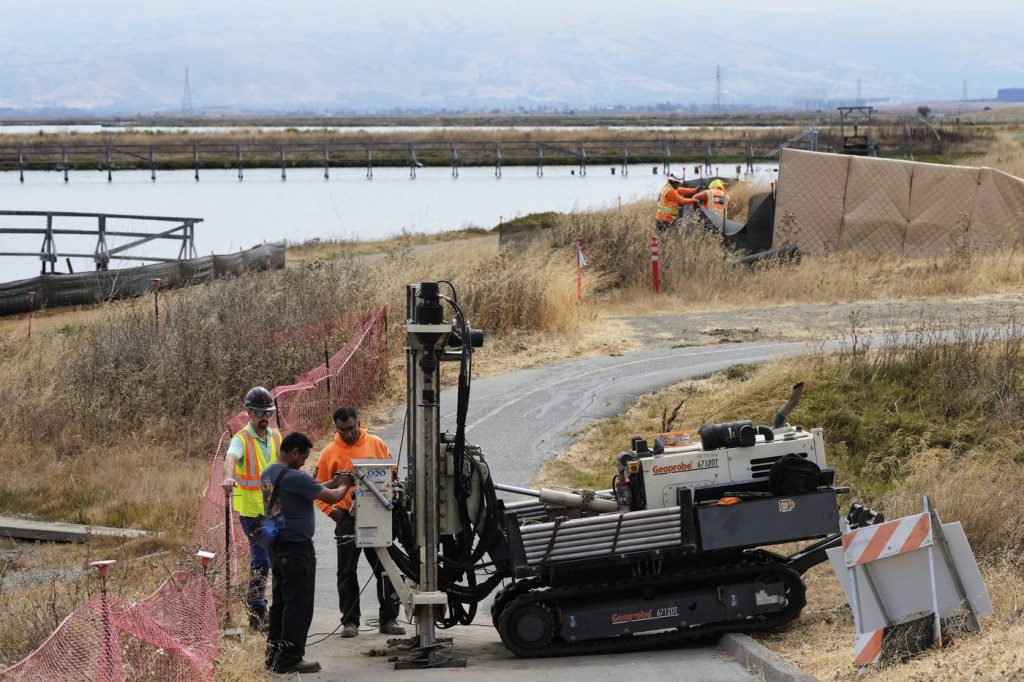In the San Francisco Bay area, salt ponds that were established over a century ago are reverting back to marshland, signaling a move towards ecological restoration. Meanwhile, beaches along the New York and New Jersey coasts, which suffered severe damage from Superstorm Sandy, are undergoing extensive restoration efforts. In Alabama, a reconstructed stretch of land is now acting as a buffer for a historic town while also serving as wildlife habitat. These initiatives reflect a broader trend across coastal communities in the U.S. that are actively working to combat the effects of rising sea levels, heightened tidal activity, and increasingly severe storm surges, which are eroding coastlines, displacing saltwater further inland, and threatening local ecosystems and human settlements.
This urgent need for coastal restoration became particularly evident when Louisiana officials recently canceled a $3 billion restoration project due to objections from the fishing industry and concerns over rising costs. The Mid-Barataria project aimed to rebuild over 20 square miles (32 square kilometers) of land within approximately 50 years by redirecting sediment-rich water from the Mississippi River. Despite this setback, numerous other projects in Louisiana and across the nation are ongoing. These include the restoration of barrier islands, saltwater marshes, shellfish reefs, and other natural features that historically provided protection before being damaged by human development. Additionally, communities are investing in the construction of flood walls, berms, and levees to safeguard areas lacking sufficient natural protection.
The urgency for these restoration efforts has intensified as climate change drives more destructive and intense storms while contributing to rising sea levels that threaten hundreds of communities and millions of residents, according to scientists. Doug George, a geological oceanographer at the National Oceanic and Atmospheric Administration, emphasized, "The sooner we can make these coastlines more resilient the better." The Gulf Coast, particularly vulnerable to hurricanes, has seen significant land loss. Louisiana, for instance, has lost over 2,000 square miles (5,180 square kilometers) of coastline in the last century, making it the state with the highest loss according to the U.S. Geological Survey. The disruption of the land-building processes historically driven by the deposition of sediment from the Mississippi and other rivers has been exacerbated by the construction of channels and levees, leading to serious vulnerabilities highlighted by disasters such as Hurricane Katrina in 2005.
As a response to these vulnerabilities, Louisiana established the Coastal Protection and Restoration Authority to mitigate risks posed by storm surges and combat land loss. Over the past two decades, nearly $18 billion has been allocated primarily to reinforce levees, flood walls, and various protective structures. Numerous projects are either completed, planned, or in progress to restore marshlands and other habitats, using sediment dredged from waterways to nourish sinking marshes. For example, on the Chandeleur Islands, a barrier island chain in Louisiana, sand will be pumped to help rebuild the islands while also protecting wildlife, including sea turtles.
Similar restoration efforts are unfolding in other states. In Bayou La Batre, Alabama, a historical fishing village established in the late 1700s, The Nature Conservancy has built offshore breakwaters and added sediment to create vegetated ridges, which serve as a protective barrier against erosion. They are also developing miles of oyster reefs and acquiring land away from the coast to allow species to adapt to advancing seawater.
On the West Coast, communities face challenges from rising sea levels and more frequent flooding due to intensified atmospheric river events. Efforts are underway to restore tidal marshes and estuaries that have been drained for industrial use, not only for habitat restoration but also for their protective benefits against coastal flooding. For instance, marsh restoration projects near San Francisco Bay aim to enhance natural systems that can absorb storm energy and high tides, thus protecting adjacent valuable properties including those near Silicon Valley.
After Superstorm Sandy devastated the Atlantic coast in 2012, communities have been proactive in restoring natural protective measures and constructing new ones. With predictions suggesting sea levels might rise by as much as three feet in certain regions over the next 50 years, the U.S. Army Corps of Engineers is focusing on rebuilding beaches, dunes, and other infrastructure, extending their protection efforts further inland.
Approximately 13 years after Sandy, the continued efforts for coastal restoration underline the critical need to protect not only the economy—relying heavily on coastal areas—but also to preserve the cultural heritage of communities deeply tied to these environments. Doug George emphasizes that safeguarding these areas is essential for maintaining "a whole way of life," highlighting the interconnectedness of natural environment protection and human livelihoods.










